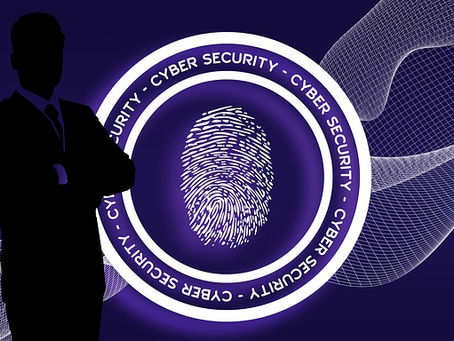The Evolution of Access Controls in Information Security
Share

image courtesy pixabay.com
Introduction
In the rapidly evolving landscape of information security, the role of access controls has become paramount. As technology continues to advance, so do the threats that seek to exploit vulnerabilities in our digital infrastructure. This blog examines the fascinating journey of access controls, tracing their evolution from rudimentary measures to sophisticated, context-aware solutions that safeguard our sensitive information in the 21st century.
The Genesis: Passwords and Biometrics
Access controls have humble beginnings, rooted in the simplest of authentication methods. Initially, the digital domain relied heavily on passwords as the primary means of securing information. Users were tasked with creating and memorizing these alphanumeric strings, forming the first line of defense against unauthorized access.
Over time, the limitations of passwords became apparent – susceptibility to brute-force attacks and the challenge of managing numerous credentials. This prompted the integration of biometric authentication, leveraging unique physical or behavioral traits for identity verification. Fingerprint scanners, retina scans, and voice recognition systems emerged, adding an extra layer of security.
Rise of Role-Based Access Control (RBAC)
As digital ecosystems expanded, organizations found themselves grappling with the complexities of managing access across diverse user roles. Role-Based Access Control (RBAC) emerged as a solution to this challenge. Introduced in the 1990s, RBAC aimed to streamline access by assigning permissions based on job responsibilities.
RBAC represented a significant leap forward, providing a more scalable and efficient approach to access management. It reduced the risk of unauthorized access by aligning permissions with organizational hierarchies and responsibilities.
Access Controls in the Era of Cloud Computing
The advent of cloud computing ushered in a paradigm shift, altering the traditional boundaries of information storage and processing. Access controls had to adapt to this dynamic environment, leading to the development of cloud-specific access management solutions.
Identity and Access Management (IAM) systems became instrumental in securing cloud-based infrastructures. These systems centralized user authentication and authorization, allowing organizations to manage access across various cloud services through a unified platform. IAM facilitated the enforcement of policies, ensuring that users had the right level of access regardless of their physical location.
Context-Aware Access Controls
The evolving threat landscape necessitated a more sophisticated approach to access controls. Context-aware access controls emerged as a response to the realization that not all access requests are created equal. Contextual information such as user location, device type, and time of access became crucial factors in determining the legitimacy of a request.
By analyzing contextual data, organizations could make more informed decisions about granting or denying access. For example, if a user attempted to access sensitive data from an unfamiliar location or an unrecognized device, the system could trigger additional authentication measures or deny access altogether. Context-aware access controls added an adaptive layer to security, responding dynamically to the ever-changing risk landscape.
Zero Trust Security Model
In an era where perimeter defenses are no longer sufficient, the Zero Trust security model emerged as a revolutionary approach to access controls. Coined by Forrester Research, the Zero Trust model operates on the assumption that no entity, whether inside or outside the network, should be trusted by default.
Zero Trust relies on continuous verification of the user’s identity and devices, regardless of their location or network connection. It assumes that threats may already exist within the network, necessitating a constant evaluation of access privileges. This model aligns well with the evolving nature of modern work environments, where remote access and mobile devices are the norm.
Biometric Advancements and Behavioral Analytics
As technology advanced, so did the capabilities of biometric authentication. Facial recognition, gait analysis, and keystroke dynamics joined the arsenal of biometric identifiers. These advancements not only enhanced security but also improved user experience by providing frictionless authentication methods.
Behavioral analytics also became a vital component of access controls. By analyzing patterns of user behavior, systems could identify anomalies that might indicate unauthorized access. This proactive approach added an extra layer of defense, allowing organizations to detect and respond to potential security incidents before they escalated.
The Role of Artificial Intelligence in Access Controls
Artificial Intelligence (AI) has played a transformative role in information security, and access controls are no exception. Machine learning algorithms can analyze vast datasets to identify patterns, anomalies, and potential threats. AI-driven access controls can adapt to evolving risks, automatically adjusting policies and responses based on real-time insights.
Furthermore, AI enables predictive analysis, helping organizations anticipate potential security issues and take preemptive measures. The ability to learn from historical data and adapt to new threats positions AI as a powerful ally in the ongoing battle against cyber threats.
Adaptive Authentication and Risk-Based Access Controls
In the quest for a more dynamic and responsive security framework, adaptive authentication gained prominence. Unlike traditional static authentication methods, adaptive authentication tailors the level of authentication based on the perceived risk associated with a particular access request.
Risk-based access controls use contextual information and threat intelligence to assign risk scores to access attempts. Factors such as user behavior, location, and device health contribute to the risk assessment. Based on these scores, the system can dynamically adjust the authentication requirements. For example, a high-risk access attempt might trigger multifactor authentication, while a low-risk attempt may proceed with minimal friction.
This adaptive approach acknowledges that security is not a one-size-fits-all concept and allows organizations to strike a balance between user experience and robust protection against potential threats.
Blockchain Technology and Access Controls
The emergence of blockchain technology has introduced a novel dimension to access controls. Blockchain’s decentralized and immutable ledger provides a transparent and tamper-resistant record of transactions and access events. Integrating blockchain into access controls enhances transparency and accountability in user interactions with sensitive data.
By leveraging blockchain, organizations can create auditable trails of access events, ensuring that any changes or attempts at unauthorized access are recorded and traceable. This not only strengthens security measures but also facilitates compliance with regulatory requirements that mandate stringent data accountability.
Privacy-Preserving Access Controls
In the era of heightened privacy concerns, access controls are evolving to prioritize user privacy without compromising security. Privacy-preserving access controls emphasize the need to grant access on a need-to-know basis, minimizing the exposure of sensitive information to individuals who do not require it for their responsibilities.
Technologies such as homomorphic encryption and differential privacy play a crucial role in preserving privacy while still allowing authorized entities to perform necessary tasks. Homomorphic encryption enables computation on encrypted data without decrypting it, while differential privacy introduces noise to data to protect individual user identities.
The Intersection of IoT and Access Controls
The proliferation of Internet of Things (IoT) devices has expanded the attack surface for potential threats. Access controls must adapt to the diverse and often resource-constrained nature of IoT devices. Authentication and authorization mechanisms tailored for IoT environments are crucial to prevent unauthorized access and potential compromise of connected devices.
Implementing access controls in IoT involves not only securing communication channels but also ensuring that each device has a unique identity and adheres to established security policies. The challenge lies in managing a vast and heterogeneous network of devices while maintaining a robust security posture.
The Human Factor: User Education and Awareness
While technological advancements play a pivotal role in access controls, the human factor remains a critical aspect of information security. The best access control systems can be undermined by human errors, such as weak password choices, sharing credentials, or falling victim to phishing attacks.
User education and awareness programs are integral to strengthening access controls. Empowering users with the knowledge to recognize and respond to security threats contributes significantly to the overall effectiveness of access control measures. Security awareness training, regular updates on emerging threats, and promoting a security-conscious culture within organizations are essential elements in the ongoing battle against social engineering attacks.
Some of the links mentioned in this article may be affiliate links. If you decide to buy any of the mentioned items, I would appreciate you buy it with my affiliate links. It will be a great support to me. I may get a tiny contribution out of it, with no extra cost to you. Thank you.


